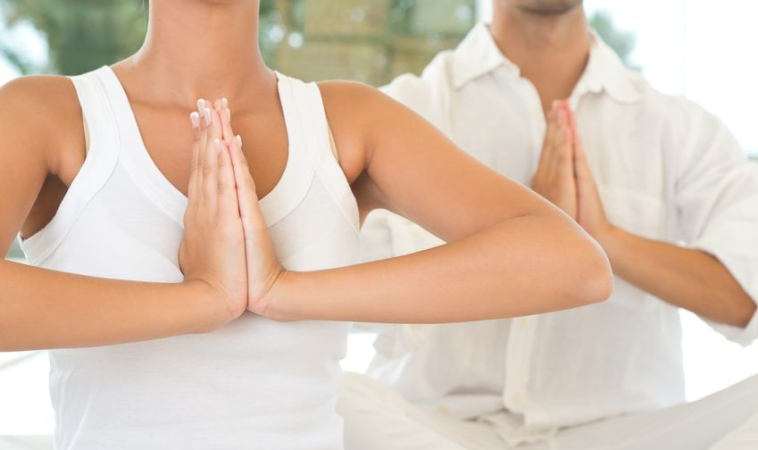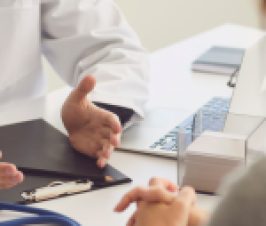Dr. Sarah Cimperman, ND
@DrCimperman
Relaxation is an important part of reversing prediabetes, staying healthy, and reducing the risk of some of the deadliest diseases in the United States including type two diabetes mellitus, cardiovascular disease, and cancer. When I bring up the subject of relaxation with my patients, they often tell me they’re too busy to relax. It takes too much time. They don’t know how. It doesn’t come naturally to them. They would prefer to take a supplement and get on with their day, but that’s exactly why I recommend relaxation. Because it isn’t about taking something, it’s about doing something, and because people who think they have no time to relax are usually the ones who have the most to gain from trying it.
Physiology and Relaxation
The relaxation response is the opposite of the “flight or fight” reaction that our bodies have to stress. As part of an inherent survival instinct, stress hormones prepare the body for action by raising alertness, increasing heart rate and blood pressure, and boosting levels of blood sugar and insulin. In small doses, this can be good, but in big doses and for extended periods of time, it can be dangerous, whether stressors are physical or mental, real or imagined. Continuous elevation of stress hormones triggers inflammation, prompts the body to store fat, increases the risk of developing diabetes and other chronic illnesses, and interferes with natural detoxification mechanisms.1 Chronic stress also depletes serotonin, a chemical messenger in the brain that helps regulate appetite, mood, sleep, learning, and memory.
We can counter the effects of stress by inducing our inherent relaxation response. Studies show that relaxation reduces the expression of genes involved in inflammation and enhances the expression of genes associated with metabolism, energy production, blood sugar control, immunity, and aging.2 In clinical practice, relaxation techniques have been useful in treating diabetes, hypertension, insomnia, pain, depression, and anxiety.2,3, 4 Meditation in particular has been found to increase the thickness of certain areas of the brain and it may also offset the natural shrinkage that happens to our brains as we get older.5
Everyone can benefit from relaxation. It may not always come naturally, but it’s a skill we can learn. Like any skill, relaxation requires practice, focus, and concentration, and the more we do it, the easier it will be. Lots of techniques exist, including basic breathing exercises, progressive muscle relaxation, meditation, self hypnosis, exercise, yoga, tai chi, and qi gong. Find one that resonates with you and practice it regularly, preferably at the same time each day, and whenever the need arises.
An important part of relaxation is unplugging from the myriad of electronic devices we surround ourselves with, but certain technologies can be useful for learning techniques like progressive muscle relaxation, meditation, and self hypnosis. Guided soundtracks make relaxation easy and accessible, and once you know how, you can do it on your own without a device. (Until then, minimize your exposure to light at night and electromagnetic radiation by always using the “Airplane mode” and dimming the brightness of the screen as much as possible after dark.) These five resources will help you get started right away. Most of them are free, none require any special equipment, and some take only two minutes, so there’s no good excuse not to try.
Breathe2Relax
This app guides users through basic breathing exercises and allows them to customize their experience by choosing the number of breathing cycles per session, increasing or decreasing the length of inhalation and exhalation, and selecting visual images, background music, and audio prompts. Breathe2Relax also explains the science behind activating the relaxation response and offers the option to track your levels of stress over time. Free for iPhone, iPad, and Android.
Calm
This website and app offer free guided meditations ranging from two to twenty minutes as well as relaxing images and music you can use for self-guided practice along with a timer. Users can access programs like “The Seven Steps of Calm” to learn more about various aspects of relaxation. Free for iPhone, iPad, and Android.
Headspace
Founded by a former Buddhist monk, Headspace is “the gym membership for the mind.” This website and app make mindfulness meditation easy and accessible. Users can watch animated videos to learn more about the practice, set daily reminders, track their progress, and connect with friends to share the journey. Try the “Take 10” guided meditations and practice one ten-minute session each day for ten days. Free for iPhone, iPad, and Android.
Self Hypnosis
Hypnosis can be performed by a professional, but self-hypnosis is also effective and it’s something that you can do almost anytime, anywhere. In his book, Self-Hypnosis And Subliminal Technology: A How-to Guide for Personal-Empowerment Tools You Can Use Anywhere!, Eldon Taylor explains the mechanics of hypnosis, how it affects brain wave activity, and why it’s a natural state for humans. He also refutes common misconceptions and offers tips and exercises to help readers master essential techniques. The accompanying audio tracks guide listeners through various exercises and you can get started by listening to the first track, whether you’ve read the book or not. Available in hard cover and Kindle editions. Hay House, 2012.
Relax Melodies
Listening to music and sounds of nature can be relaxing, and they can help create a soothing environment during meditation, yoga, breathing exercises, or sleep. The Relax Melodies app offers a variety of musical tracks, nature soundscapes, and even white noise, as well as an alarm and timer in case you relax yourself to sleep. Free for iPhone, iPad, and Android.
 Sarah Cimperman, ND is the author of the book, The Prediabetes Detox: A Whole-Body Program to Balance Your Blood Sugar, Increase Energy, and Reduce Sugar Cravings. She graduated from NCNM in 2002 and has a private practice in New York City. Her expertise has been featured on Fox News and Huffington Post and in Natural Health magazine, Whole Living magazine, and the Well Being Journal, among other publications. Dr. Cimperman also writes two blogs, A Different Kind Of Doctor and The Naturopathic Gourmet.
Sarah Cimperman, ND is the author of the book, The Prediabetes Detox: A Whole-Body Program to Balance Your Blood Sugar, Increase Energy, and Reduce Sugar Cravings. She graduated from NCNM in 2002 and has a private practice in New York City. Her expertise has been featured on Fox News and Huffington Post and in Natural Health magazine, Whole Living magazine, and the Well Being Journal, among other publications. Dr. Cimperman also writes two blogs, A Different Kind Of Doctor and The Naturopathic Gourmet.
References:
- Godfrey KM, Inskip HM, Hanson MA. The Long-Term Effects of Prenatal Development on Growth and Metabolism. Seminars in Reproductive Medicine. 2011;29(3):257-65. http://www.ncbi.nlm.nih.gov/pmc/articles/PMC3685133/
- Bhasin MK, Dusek JA, Chang B-H, Joseph MG, Denninger JW, et al. Relaxation Response Induces Temporal Transcriptome Changes in Energy Metabolism, Insulin Secretion and Inflammatory Pathways. PLoS One. 2013;8(5):e62817. http://www.ncbi.nlm.nih.gov/pmc/articles/PMC3641112/
- McGinnis RA, McGrady A, Cox SA, and Grower-Dowling KA. Biofeedback-assisted relaxation in type 2 diabetes. Diabetes Care. 2005;28(9):2145-9. http://www.ncbi.nlm.nih.gov/pubmed/16123481
- Goyal M, Singh S, Sibinga EM, Gould NF, Rowland-Seymour A, et al. Meditation programs for psychological stress and well-being: a systematic review and meta-analysis. Journal of the American Medical Association, Internal Medicine. 2014;174(3):357-68. http://www.ncbi.nlm.nih.gov/pubmed/24395196
- Lazar SW1, Kerr CE, Wasserman RH, Gray JR, Greve DN, et al. Meditation experience is associated with increased cortical thickness. Neuroreport. 2005;16(17):1893-7. http://www.ncbi.nlm.nih.gov/pubmed/16272874

















